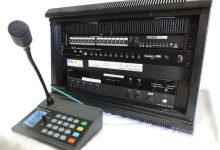We have a national STEM strategy, but what we need is a successful one

Australian schools are now wrestling with a new digital technologies curriculum. In this new subject, every student in Australia will learn the fundamentals of computer science, data science and coding.
This curriculum change is long overdue. Australian students ranked last in tech skills and interest in technical jobs according to a 2016 report produced for the World Economic Forum, across a global sample of countries.
The lack of capability in STEM is evident in the downward trend of PISA scores in science and mathematics, identified in the recently published Australia 2030: Prosperity Through Innovation Plan.
The digital technologies subject adds new content to the compulsory curriculum for all students from the start of schooling through to year eight. Although the curriculum provides a framework for challenging and engaging STEM activities, a curriculum alone is not enough to ensure students build these capabilities.
Read more: Technology in the classroom can improve primary mathematics
The national innovation plan identifies education as the first imperative for Australia’s future economic prosperity. We need to focus on strengthening pre-service and in-service teachers, and better preparing students for post-school STEM careers. The challenge is most educators have limited knowledge and experience in the discipline.
How and why we got a national strategy
In 2013, the Office of the Chief Scientist published The National STEM strategy to highlight how important having STEM skilled workers will be to Australia’s economy long-term. The report identified the critical role education plays in ensuring the strategy’s success.
In response, the Australian Education Council produced the National STEM School Strategy, which was endorsed by the Australian Education Ministers in December 2015.
Before the endorsement of the Australian Curriculum: Digital Technologies in September 2015, there was no consistent approach to teaching the fundamental concepts of computer science in Australian schools. We can now expect all states and territories to have this curriculum implemented in some form within the next couple years. The task now is to ensure teachers are equipped to facilitate this change.
The National Innovation and Science Agenda (NISA) is one way the federal government has committed to addressing the issue of teacher quality and professional development. Specifically, through their Embracing the Digital Age initiatives.
This is being supplemented at the state and territory level through initiatives such as the Queensland Coding Academy and Crack the Code in NSW. There are also independent organisations like Code Club Australia. There is a lot happening in the space. To be successful, we need a sustained and coordinated effort from schools, teachers, and the wider community.

Embracing the digital age
In total, over AU$51 million has been invested in these projects federally.
The NISA projects support digital technologies and digital literacy in schools, including:
Digital Technologies Challenges – free classroom ready resources for years five and seven, produced by the Australian Computing Academy (ACA)
face-to-face professional development, delivered by the ACA
online professional development through the University of Adelaide’s CSER MOOCs
Digital literacy grants for schools
training for principals in implementing school-wide STEM strategies
additional support for teachers and schools in disadvantaged areas through ACARA
industry partnerships through CSIRO STEM Professionals in Schools
summer school programs for students in years nine and 10.
Read more: Want to solve our STEM skills problem? Bring in the professionals
What happens now?
It is now up to schools to embrace these opportunities and incorporate them into their strategic and operational planning. Some schools have already engaged with the projects, but many others have yet to get started.
Every state and territory other than NSW is teaching digital technologies as a subject in 2018. NSW are yet to announce a date when the new curriculum will be mandatory for all schools. However, that doesn’t mean that even NSW schools can’t start now. The existing curriculum, although limited in scope, still provides opportunities for teachers to get started. Parents and the community can demand action if they’re not satisfied with the current situation in their local primary and secondary schools.
The new digital technologies curriculum is a big change from existing computing education. It is much more than digital literacy (see the ICT capability), and so teachers and school leaders cannot take a business as usual approach by only teaching word processing and spreadsheets.
Schools need to ensure all relevant teachers have the time, resources, and support to engage with the new subject in a meaningful way. Programs like the federally funded Australian Computing Academy and CSER Digital Technologies MOOCS can provide both in-person and online support opportunities and resources.
But schools need to set aside substantial professional development time for their staff to properly develop confidence and competence. At a school level, this often comes down to politics, budget and competing demands on staff time. The government, industry and researchers have identified promoting STEM as a priority. Now we need to ensure it happens. We owe it to our students to ensure their education includes the foundations necessary to contribute positively to the modern world.
This curriculum isn’t about creating a generation of programmers. It’s about giving the Australians of the future an understanding and appreciation of how the modern world works so they can meet challenges that don’t yet exist.
![]() This article was written by Nicky Ringland, PhD Student (Computer Science), University of Sydney; Bruce Fuda, Computing Education Specialist, University of Sydney. The piece first appeared on The Conversation.
This article was written by Nicky Ringland, PhD Student (Computer Science), University of Sydney; Bruce Fuda, Computing Education Specialist, University of Sydney. The piece first appeared on The Conversation.







